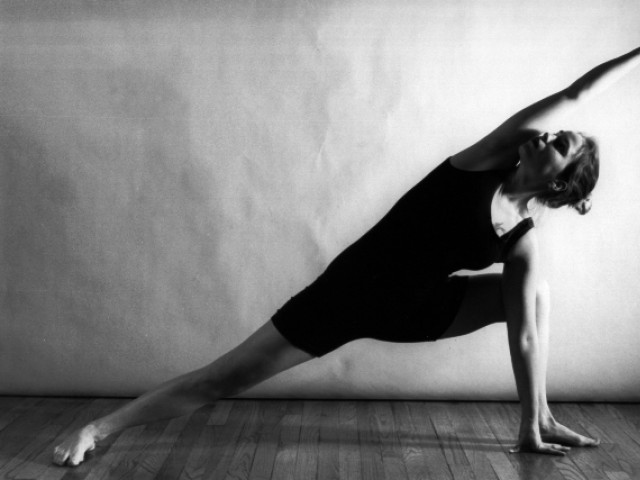
1 Child’s pose
Child’s pose may be one of the most well-known yoga poses. Certainly, it has several relaxing properties. First of all, it is very calming for the mind and by placing one’s head or third eye (the spot just between the eyebrows) on the mat a soothing effect on the brain is achieved. The inward fold of the body in essence sends a signal to the brain that you are safe. In many ways you are also signalling that you are beginning to wind down, to stop and recharge your batteries, which is a precursor to falling asleep. On a physiological level, when child’s pose is done with the knees closed together, the internal organs are massaged, which in turns helps digestion. The effect on the back too is relaxing as it decompresses the lower spine. The hips too will open up where knees are taken wide apart. This posture really is like shifting back down in the gears of a car, finally bringing it to rest.
2 Legs-up-the-wall
Legs-up-the-wall pose is another brilliant posture to help the body wind down. The Sanskrit name of ‘Viparita Karani’ means inverted inaction. When the legs are put up the wall this has the effect of promoting drainage from excess fluid build up in the ankles and knees. Gravity assists the circulation by returning the flow of blood back to the heart and the stomach. This posture is in fact a counter pose to standing or sitting all day. At the same time, the hamstrings and lower back are stretched and lower back tension is relieved. So the pose provides a pleasant rebalancing whether you are stressed, fatigued, jet-lagged or you have just been standing all day. Furthermore, this pose is achieved by doing very little, not just inverting your legs but inverting the whole notion of action. When you relax by putting your legs up the wall you are doing the exact opposite of activity and we learn that positive results can come from doing less, not more. Again, this is another posture where we let the body rest and start to wind down.
3 Breathing exercises
For those in the know, pranayama – breathing practices – is one of the eight limbs of yoga. We can relax the systems of the body by engaging in some simple breathing techniques. The optimal rate for adults to breathe is between three and six breaths a minute, but typically now we are taking between 12 and 20. If we rebalance our breath and slow it down, this can have a calming effect. In particular, breathing in and out through the nose and using the abdomen more than the chest can have a hugely beneficial effect. This breathing can be practiced either laying down or even sitting and placing one hand on the belly and feeling the belly inflate and deflate like a balloon. Counting to four on an inhale and then to four on an exhale is a good way to slow the breath down. To enhance this method of breathing, a simple visualisation technique can be incorporated at the same time. This involves imagining a gentle tide from the sea rolling into the shore on the inhalation and then rolling back out again on the exhalation.
4 Yoga Nidra
The final technique to aid sleep can be found in the practice of yoga nidra. Nidra is Sanskrit for sleep and yoga nidra has been variously described as the sleep of the yogis, yogic sleep or a form of conscious sleep. In essence, it is a guided or santosha meditation where you lie down and listen to the person delivering the nidra. It is started often with a progressive relaxation or body scan of the whole body, mimicking the natural process of physical relaxation. Techniques are then used to quieten the mind using the breath and focus on some visual images, opposite sensations or journey metaphors. There are a growing number of these classes now and a good selection of resources available online.

Post Your Comments